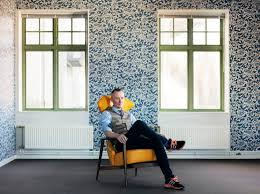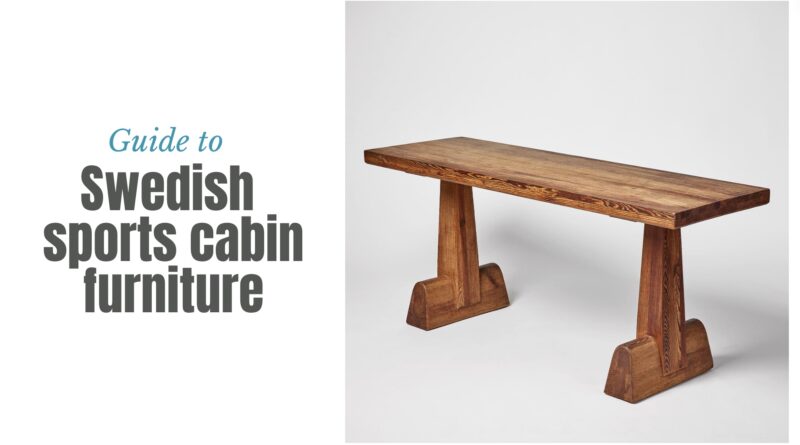Buying Swedish sports cabin pine furniture

 Design expert Andreas Seising of Auctionet.com reveals why the temperature is rising on pine furniture originally designed for Swedish sports cabins and lodges, with pieces in demand by some A-Lister celebrities.
Design expert Andreas Seising of Auctionet.com reveals why the temperature is rising on pine furniture originally designed for Swedish sports cabins and lodges, with pieces in demand by some A-Lister celebrities.
How can a small, chubby pine table from the 1930s, originally intended for Swedish summer houses in the Stockholm Archipelago, end up in the home of Kim Kardashian and Kanye West?
The answer lies in the rediscovery of a forgotten furniture designer and amongst international interior designers with a penchant for minimalist environments.
Swedish sports cabins
As a more modern—and healthier—alternative to turn-of-the-century croquet sets accompanied by a gin and tonic, an increasing number of affluent Swedes began to acquire what are known as “sports cabins” in the early the 20th century. These cabins were established near major cities and typically featured a fireplace as standard.
With these sports cabins as a base, Swedes could now engage in outdoor activities in the wilderness. In the 1930s, Sweden legislated annual vacations, and during this decade, the esteemed company A/B Nordiska Kompaniet began offering pine furniture tailored for this purpose. Many financially well-off individuals had ordered their living room and dining room furniture from A/B Nordiska Kompaniet, so it seemed natural for them to turn to the same company for the furnishings of their sports cabins.

Axel Einar Hjorth
The designer of this new furniture type was Axel Einar Hjorth, who served as the chief architect for A/B Nordiska Kompaniet’s furniture workshops from 1927 to 1938. Hjorth was responsible for exceptionally luxurious furniture for that era’s significant world exhibitions, as well as a wide range of models for the domestic market. He alternated custom work in exclusive materials with mass-produced furniture in a slightly lower price range. He seemed to create both veneered furniture in historically faithful styles and highly contemporary pieces in steel tubing and lacquer colours.
The sports cabin furniture was primarily made of pine and significantly differed from what Hjorth and A/B Nordiska Kompaniet otherwise presented in the 1930s. Despite his esteemed position for slightly over a decade, Axel Einar Hjorth was gradually forgotten over time, and it was not until the early 2000s that his work as a designer was recognised by historians. This led to significantly increased prices for his furniture, and since then, he has set many record prices on the Swedish market.
In demand
Scandinavian design has become highly sought after in recent years, making Hjorth a respected name internationally. However, it is primarily not his luxury models in exotic woods with exquisite details that have fetched the highest sums.
What international dealers and decorators willing to pay the most for are the minimalist pine sports cabin furniture. Fortunately, these pieces appear to have been extremely popular, even when they were originally produced so there is a relatively good supply of them today, despite the likelihood that many were discarded or even burned by unsuspecting owners who received the furniture in an inheritance without further information about its origin.

Auction sales
Every year, the major Swedish auction houses can present a significant number of pine furniture pieces designed by one of the most influential Swedish furniture designers of the 20th century. This is without a decline in prices.
In the wake of the record prices for Axel Einar Hjorth’s creations, there has been an increased interest in Swedish-made pine furniture from the entire 20th century. This is especially true for models with a modern design, free of embellishments and detailed ornamentation. Many of these pieces have been sold without information about the designer or manufacturer. When this trend was in its early stages a few years ago, too many of these items were offered as attributed to Axel Einar Hjorth.
Today, an increasingly discerning audience demands credible sources to pay higher prices for pine furniture from the esteemed furniture designer. Interested parties should also be wary when Hjorth’s models appear here and there without any provenance. Quite a few contemporary forgeries have also come to light, and they can be quite challenging to detect, even for a relatively trained eye.
Coarser and sturdier
The pine furniture trend has also led to an unexpected resurgence in the popularity of large, bulky pieces intended for the social gathering rooms of the 1970s and 1980s. Such furniture has gone from being unsellable to becoming highly sought after, not only on the Swedish market but also internationally. The rule of thumb seems to be that the coarser and sturdier, the better.
The only furniture items that appear to have been left behind are “cozy” wooden craftsmanship pieces without a modern touch. If they feature turned elements of an older style and/or ornate details, they are considered hopeless at auction. On the lower price levels, it can be noted that the teak furniture of the 1950s and 1960s has faced increased competition from the pine models of subsequent decades.
Designer names
In a market that is always yearning for new (old) designers, the pine trend has introduced a long list of names that were previously overlooked with disinterest on the second-hand market. One such name is Roland Wilhelmsson, who, primarily during the 1960s and 1970s, created exceptionally robust furniture, mainly in pine. Others are Sven Larsson and Gilbert Marklund. All of them have gained international attention, long after their active careers.
Carl Malmsten should also be mentioned. His significance to 20th-century Sweden cannot be overstated. With an enormous variety of models, he held a central position in Swedish furniture design for many decades. However, it is only now that his pine models have begun to attract buyers on the second-hand market. Similarly, Yngve Ekström, counted among the more influential Swedish furniture designers of the 20th century, began to focus increasingly on pine in his furniture design in the late 1960s.
So far, there is no sign of a slowdown in the pine furniture trend. Prices remain steady and trend-sensitive interior designers continue to use robust Swedish pine furniture from both the 1930s and the 1970s. However, there are whispers of an upcoming rattan wave (Axel Einar Hjorth also designed furniture in this material) but for now, prices are still quite modest.

